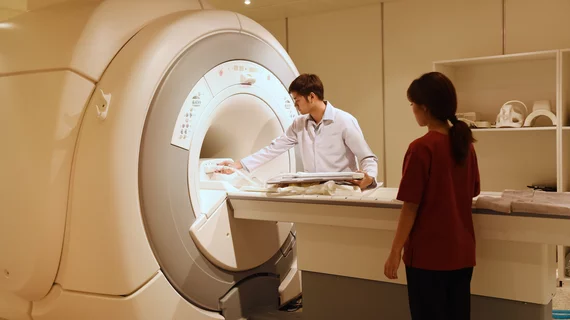Why magnetic eyelashes should not be worn during MRI scans
Wearing magnetic eyelashes during an MRI scan can reduce image quality and put the patient at risk, according to new findings published in the American Journal of Roentgenology.
“The concept of unsafe MRI is a continually moving target,” wrote authors Einat Slonimsky, MD, and Alexander Mamourian, MD, of Penn State Health Milton S. Hershey Medical Center in Hershey, Pennsylvania. “Devices that were never scanned with MRI, like pacemakers, are now routinely imaged. However, it is important for radiologists to be aware of new devices and attachments that do not appear on the standard questionnaires but still present the risk of adverse events, rather than simply wait for these events to accumulate before acting.”
The authors used a water-based phantom to assess how magnetic eyelashes—one of the most popular fashion trends in recent years—impact patient safety during MRI scans. Two sets of magnetic eyelashes were attached to nylon strings located within the phantom, which was then submerged in distilled water before numerous image types were collected. The same sequences were then carried out with aneurysm clips in the water so Slonimsky and Mamourian could make comparisons.
Overall, the team observed that the eyelashes “created a large artifact” that was bigger than when the aneurysm clips were scanned. The artifact’s size was 7 cm x 6 cm, completely obscuring the phantom. In addition, one set of the eyelashes “detached from its string” while the MRI scans were taking place.
“We have shown that these magnetic eyelashes will significantly degrade clinical images but can also present a hazard to the patient,” the authors wrote. “On that basis, they should be added to the preimaging MRI questionnaire, and clerical staff who schedule MRI scans should advise against their use on the day of scanning.”
Slonimsky and Mamourian did note that they could not find any reports of “adverse events or imaging effects from magnetic eyelashes.”
“However, it is possible that patients with these lashes have already undergone scanning, but the artifact was sufficiently large that its source was uncertain,” they wrote. “It is important to also consider that MRI accidents without substantial morbidity are likely underreported.”

